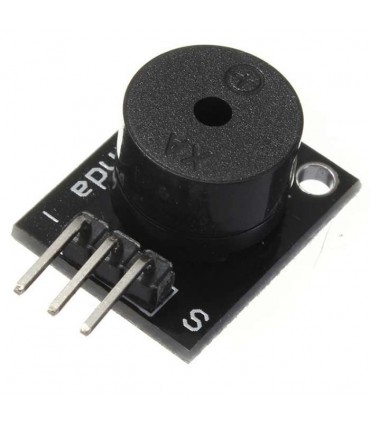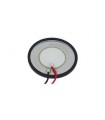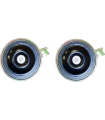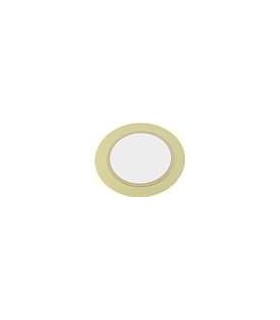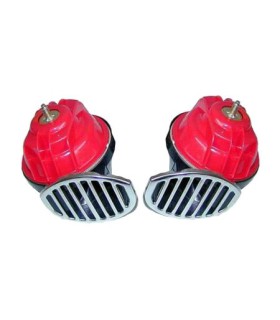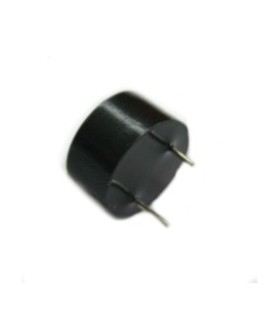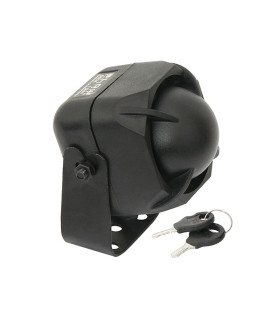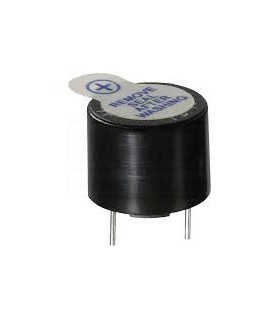Garsinis signalizatorius 1,5-15Vdc 1.5-2.5kHZ Mažo pasyvaus skambučio modulis, analogas Arduino KY-006
maitinimas 1-15 V dC; dažnis 1.5-2.5kHZ
Kaina 1,00 €
(su PVM)
Prekės kodas:
PPK-244/27
1. The function of the buzzer: the buzzer is an integrated structure of the electronic buzzer, powered by a DC power supply, and is widely used in computers, printers, copiers, alarms, electronic toys, automotive electronic equipment, telephones, timers, etc. Used as a sounding device in electronic products.
2. Buzzer classification: mainly divided into two types: piezoelectric buzzer and electromagnetic buzzer.
3. The circuit graphic symbol of the buzzer: the buzzer is represented by the letter "H" or "HA" in the circuit (the old standard uses "FM", "LB", "JD", etc.).
(2) The structure principle of the buzzer
1. Piezoelectric buzzer: The piezoelectric buzzer is mainly composed of a multivibrator, a piezoelectric buzzer, an impedance matcher, a resonance box, and a shell. Some piezoelectric buzzers are also equipped with light-emitting diodes.
Multivibrator is composed of transistors or integrated circuits. When the power is turned on (1.5V-15V DC working voltage), the multivibrator will vibrate and output 1.5-2.5kHZ audio signals, and the impedance matcher will drive the piezoelectric buzzer to sound.
The piezoelectric buzzer is made of lead zirconate titanate or lead magnesium niobate piezoelectric ceramic material. Silver electrodes are plated on both sides of the ceramic sheet, and after polarization and aging treatment, they are then glued together with the brass sheet or stainless steel sheet.
2. Electromagnetic buzzer: The electromagnetic buzzer is composed of oscillator, electromagnetic coil, magnet, vibrating diaphragm and shell.
After the power is turned on, the audio signal current generated by the oscillator passes through the electromagnetic coil, causing the electromagnetic coil to generate a magnetic field. The vibrating diaphragm periodically vibrates and produces sound under the interaction of the electromagnetic coil and the magnet.
(3) Making of the buzzer
(1) Preparation of electromagnet M: Wind 100 turns of wire on an iron bolt with a length of about 6 cm, leaving 5 cm at the end of the wire as a lead, and stick the coil with transparent tape to prevent the coil from loosening, and then stick it with tape On a box, the electromagnet is ready.
(2) Preparation of shrapnel P: Cut a long iron piece with a width of about 2 cm from the iron can, bend it at a right angle, connect a lead of the electromagnet to the shrapnel, and then use tape to stick the shrapnel on the wooden board.
(3) Use a paper clip as the contact Q, put the paper clip up high with a book, glue it firmly with tape, and lead out a wire. Connect the circuit as shown in the figure.
(4) Adjust the distance between M and P (by moving the box), so that the electromagnet can attract the shrapnel, adjust the distance between the contacts and the shrapnel, so that they can just touch, and you can hear the buzzing sound after power on.
